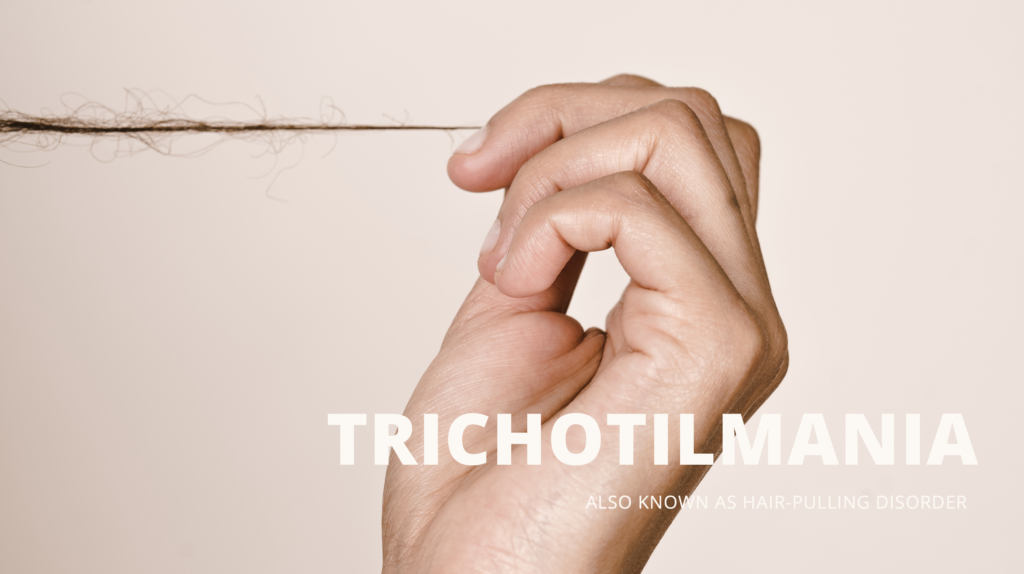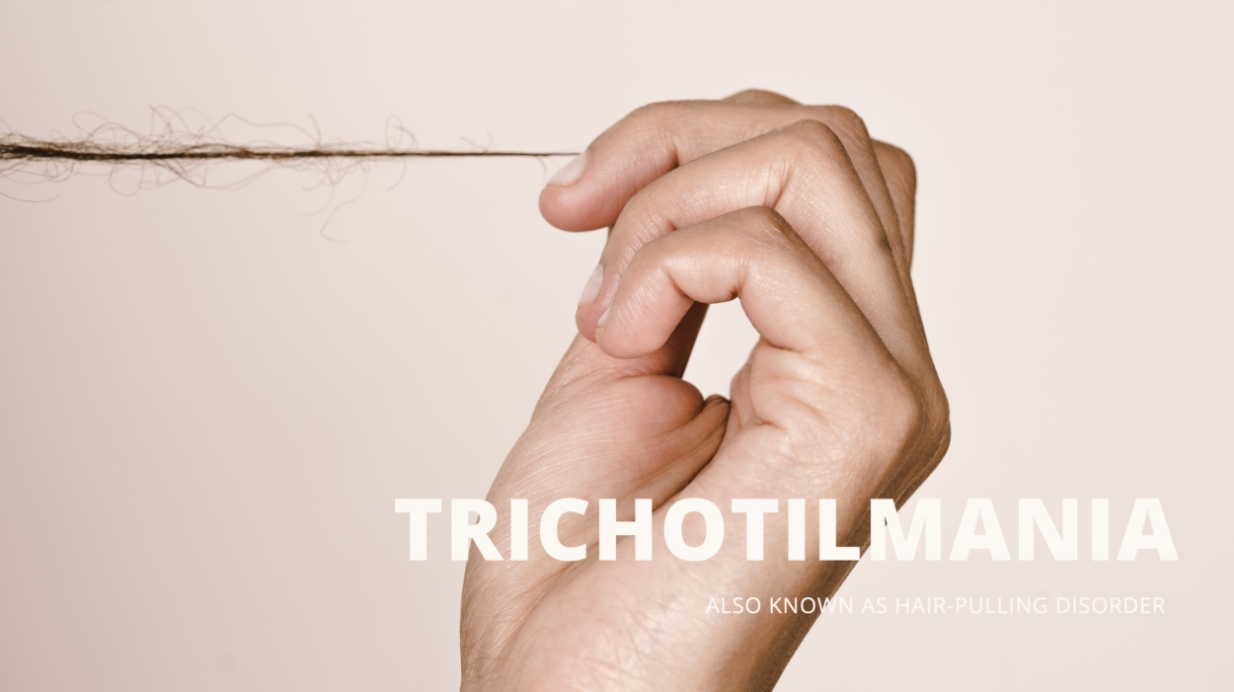Trichotillomania
tillomania, also known as hair-pulling disorder, is a mental health condition characterized by the recurrent and irresistible urge to pull out one's own hair. This hair-pulling can occur from any part of the body, but most commonly affects the scalp, eyelashes, eyebrows, and pubic area.
Symptoms of trichotillomania can include noticeable hair loss, bald patches, and a sense of tension or anxiety before and during hair-pulling episodes. Many individuals with trichotillomania also engage in behaviors such as biting, chewing, or swallowing the hair they pull out, which can lead to additional health complications such as intestinal blockages or infections.
Trichotillomania is classified as an obsessive-compulsive disorder (OCD) related disorder, and is estimated to affect approximately 1-3% of the population. The condition can develop at any age, but most commonly starts in childhood or adolescence. It is more common in females than males.
The exact cause of trichotillomania is not known, but it is thought to be related to a combination of genetic, biochemical, and psychological factors. Individuals with trichotillomania may have a family history of the condition, and may also have co-occurring mental health conditions such as anxiety or depression.
Treatment for trichotillomania typically involves a combination of therapy and medication. Cognitive-behavioral therapy (CBT) is the most widely used therapy for trichotillomania, and can help individuals learn to recognize and manage the triggers and urges associated with hair-pulling. Medications such as selective serotonin reuptake inhibitors (SSRIs) may also be prescribed to help reduce symptoms of anxiety and depression.
It is important to seek help from a qualified mental health professional if you or someone you know is struggling with trichotillomania. While the condition can be difficult to overcome, with the right treatment and support, individuals with trichotillomania can learn to manage their symptoms and improve their overall quality of life.
It is worth noting that trichotillomania is a chronic condition, and relapses are possible even after successful treatment. It's important for individuals with trichotillomania and their loved ones to be patient and understanding, and to continue to work with a mental health professional to manage symptoms over time.
Trichotillomania can present in a variety of forms, each with their unique characteristics. Here are a few examples:
- Scalp hair pulling: This is the most common form of trichotillomania, and involves pulling out hair from the scalp. This can result in noticeable hair loss and bald patches on the scalp.
- Eyelash and eyebrow pulling: This form of trichotillomania involves pulling out hair from the eyelashes and eyebrows. This can result in thinning or complete loss of eyelashes and eyebrows.
- Body hair pulling: In this form of trichotillomania, individuals pull out hair from various parts of the body such as the legs, arms, beard, chest and pubic area.
- Trichophagia: This is the practice of eating or swallowing the hair that is pulled out. This can lead to intestinal blockages or infections and can be dangerous if not treated.
- Dermatillomania: This is a condition characterized by compulsive skin picking, which can be associated with trichotillomania. Individuals with dermatillomania will pick at their skin until it bleeds or creates an open sore.
- Nail biting: Some individuals with trichotillomania may also engage in the compulsive habit of biting their nails.
It's important to note that these forms of trichotillomania can co-occur, and some individuals may experience more than one form of the condition. A qualified mental health professional can help determine the specific form or forms of trichotillomania that an individual is experiencing and develop an appropriate treatment plan.
Trichotillomania and Stress
Trichotillomania is often associated with stress, as individuals with the condition may experience an increase in hair-pulling during times of stress. Stress can also exacerbate the symptoms of trichotillomania and make it more difficult to manage the condition. Stressful situations, such as a job loss or relationship problems, can trigger an increase in hair-pulling behavior, making it difficult for individuals with trichotillomania to break the cycle of hair-pulling. Furthermore, the physical and emotional effects of trichotillomania can contribute to increased stress levels, creating a vicious cycle. To manage trichotillomania, it's important to learn how to identify and manage stressors, as well as to develop coping mechanisms to help reduce stress levels. This can include practices such as mindfulness, meditation, exercise and therapy.


